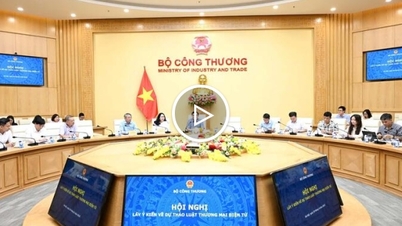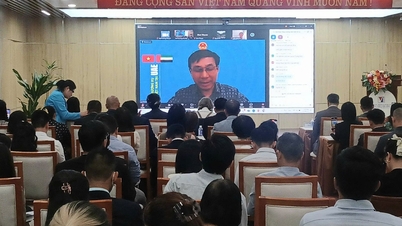As the traditional news industry embraces digitization and looks for innovative ways to engage readers, voice cloning and text-to-speech (TTS) are offering a host of advantages that promise to revolutionize the reading experience and open up new opportunities for authors and newsrooms alike.

Illustration photo. Source: SS
What is text to speech?
TTS, as the name suggests, is a technology that converts written text into speech. This innovation bridges the gap between human and machine language, allowing computers, smartphones, and other devices to communicate with humans through voice. The process involves complex algorithms and large language models to analyze the input text and generate output audio with the right intonation, pronunciation, and rhythm.
The application of TTS technology goes beyond enhancing the user experience with accessibility features for the visually impaired. It has become an important component of virtual assistants and audiobooks, navigation systems, language learning tools, etc. By leveraging TTS, these applications can interact with users in a more engaging and human-like way, significantly enhancing their usability and appeal.
AI Voice Cloning
AI voice cloning, also known as speech synthesis, is an advanced application of artificial intelligence that involves training a machine learning model to recreate a person's voice based on a collection of voice data. This involves recording a significant number of audio samples from the target voice, capturing voice samples with different nuances.
At the heart of AI voice cloning lies neural network-based models. These models analyze speech data, learn the intricate details of a speaker's voice, and generate a new voice that sounds very similar to the original.
Enhanced accessibility
One of the most important advantages of combining TTS and AI voice transcription in publishing is increased accessibility. With TTS, written content can be converted into speech, allowing blind readers to access books, newspapers, and other written materials in audio format. This inclusivity ensures that content is accessible to a wider audience, breaking down barriers for those who cannot read.
People who don't have time to read
For audiences with limited time or attention spans, consuming online content can be time-consuming and laborious. The process can be tedious, making it difficult to stay up to date with the latest information.
In this regard, TTS tools make updating information easier and more convenient. These tools provide a vivid audio experience that resembles natural speech, turning articles into engaging spoken content.
TTS allows readers to make the most of their time and stay informed while performing other activities.
TTS enhances user engagement in the digital age
In today’s digital landscape, TTS technology has emerged as an effective tool for delivering news in audio format. Recent statistics have shown that 10% of readers choose to listen to articles and more than 75% follow through to the end. This highlights the potential of TTS to significantly enhance users’ attention spans for digital content.
Notably, younger readers find the audio format particularly appealing due to its convenience and low effort or time requirement. Publishers also report increased subscriptions and revenue through audio advertising, making TTS a solid approach to sustainable growth in the news publishing industry.
Personalization and immersive experiences
AI voice cloning takes reader engagement to another level by providing personalized narration. With the ability to replicate the voices of real individuals, publishers can deliver articles, audiobooks, and other audio content narrated by editors, authors, or celebrities.
Not only does this deepen the connection between the audience and the content, it also enhances the immersive experience, allowing the reader to feel like they are hearing the author tell their story directly.
Time and cost effective
Combining TTS and AI voice cloning technology in the publishing process streamlines content production and reduces costs significantly. Creating articles and audiobooks, which once relied on hiring voice actors and lengthy recording sessions, can now be automated using AI voice cloning.
This speeds up production and reduces production costs, making articles and audiobooks a more viable and profitable option for news and media organizations.
Hoang Ton (according to IFRA)
Source


![[Photo] The 1st Congress of Party Delegates of Central Party Agencies, term 2025-2030, held a preparatory session.](https://vphoto.vietnam.vn/thumb/1200x675/vietnam/resource/IMAGE/2025/9/23/e3a8d2fea79943178d836016d81b4981)
![[Photo] General Secretary To Lam meets voters in Hanoi city](https://vphoto.vietnam.vn/thumb/1200x675/vietnam/resource/IMAGE/2025/9/23/d3d496df306d42528b1efa01c19b9c1f)
![[Photo] Prime Minister Pham Minh Chinh chairs the 14th meeting of the Steering Committee on IUU](https://vphoto.vietnam.vn/thumb/1200x675/vietnam/resource/IMAGE/2025/9/23/a5244e94b6dd49b3b52bbb92201c6986)

![[Photo] Editor-in-Chief of Nhan Dan Newspaper Le Quoc Minh received the working delegation of Pasaxon Newspaper](https://vphoto.vietnam.vn/thumb/1200x675/vietnam/resource/IMAGE/2025/9/23/da79369d8d2849318c3fe8e792f4ce16)































































































Comment (0)